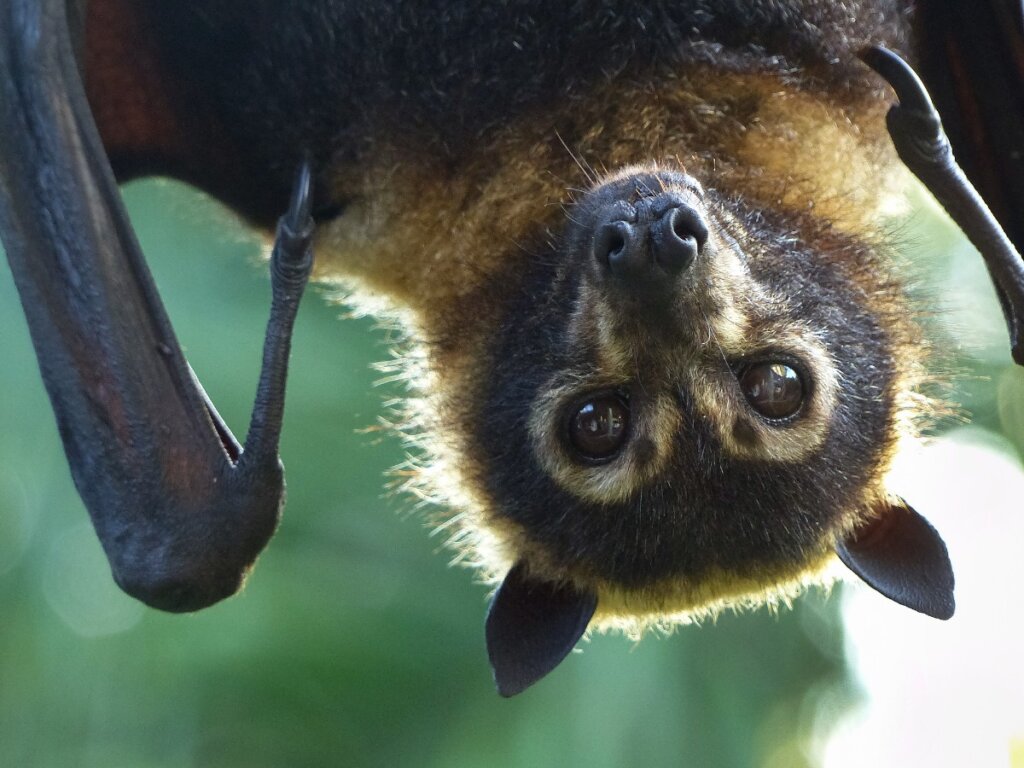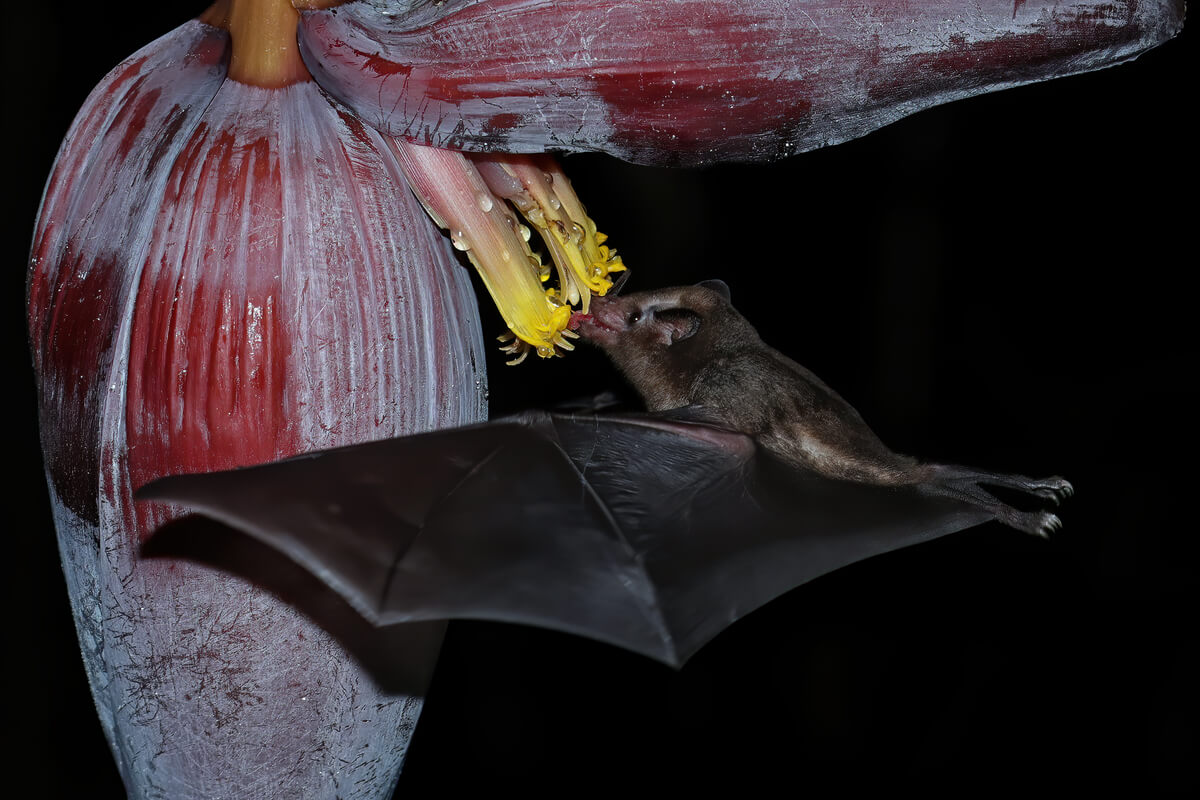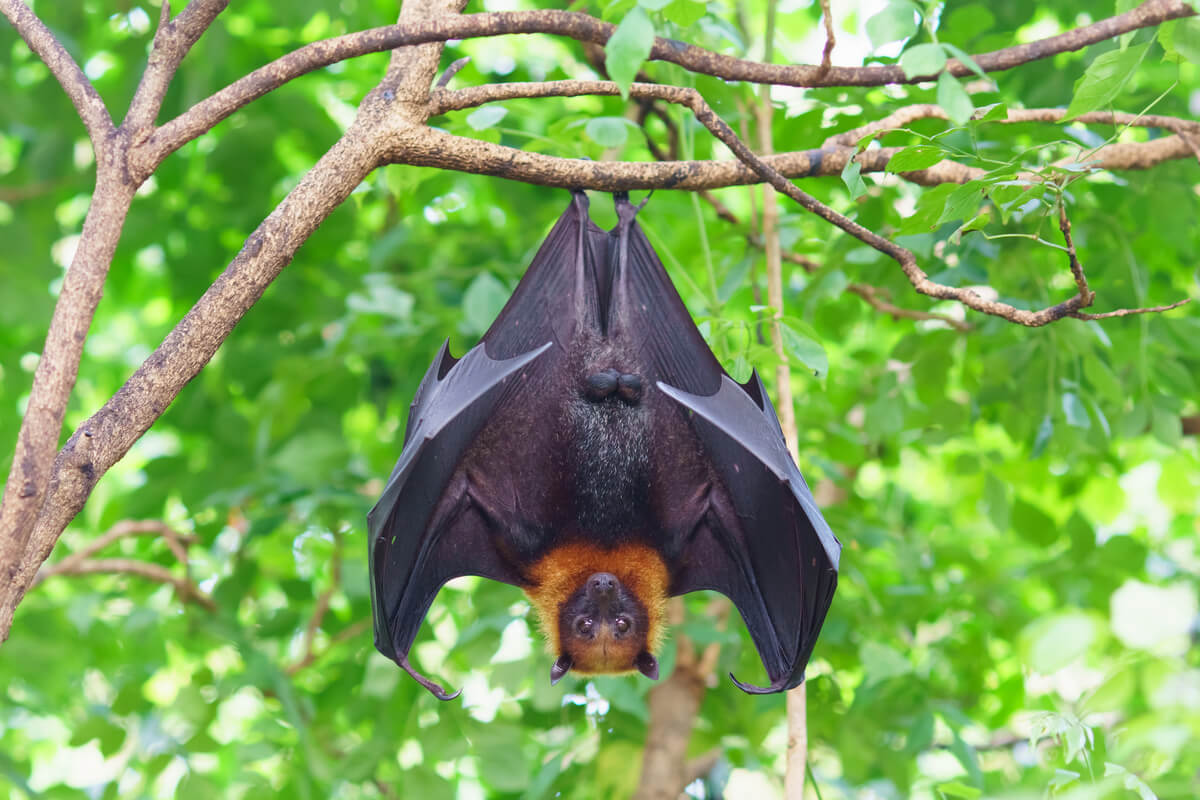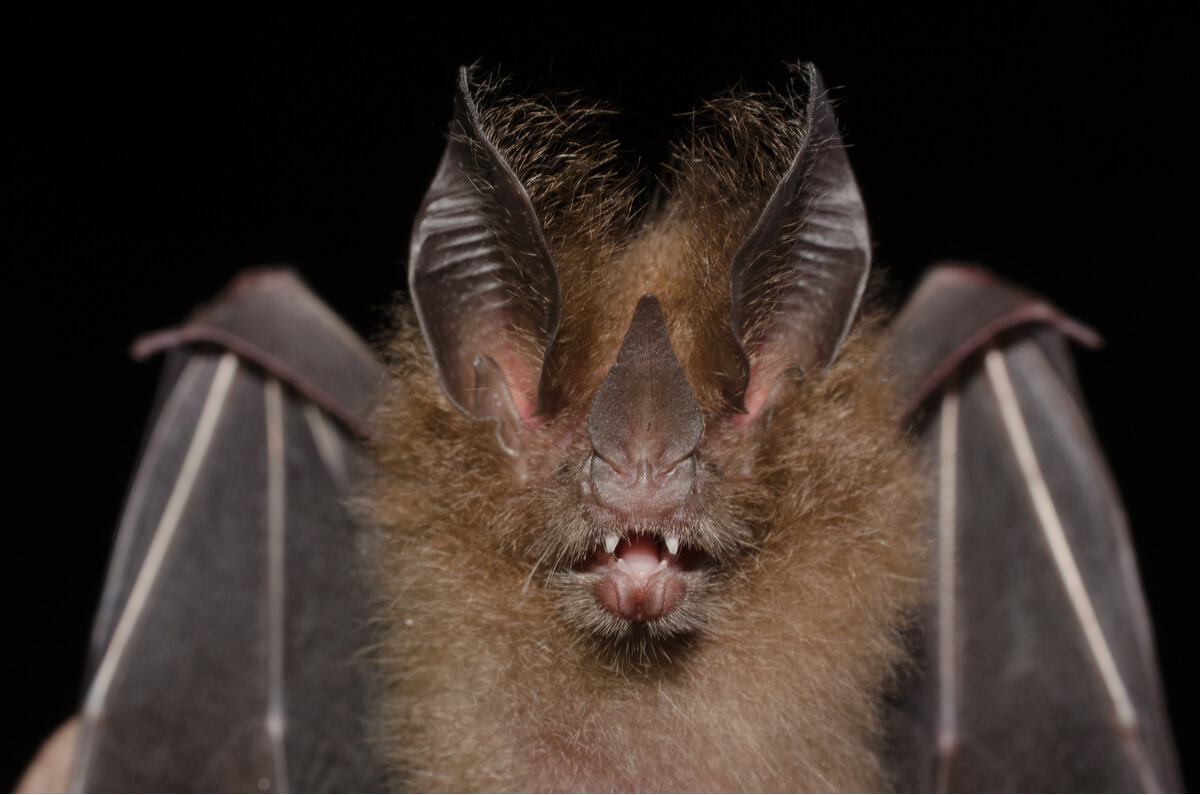Types of Bats

These mammals, the only ones with the ability to fly, guide themselves with their famous echolocation, and also sleep upside down during the day. There are several types of bats that you’ll get to know in this article according to their type of diet. Many of them are quite far removed from the typical idea that we have about these animals!
incredibly, there are more than 1000 different species of bats and all of them play a fundamental role in the ecosystem, be it controlling insect populations, pollinating, or spreading seeds. If you want to get to know these winged mammals a little better, read on.
Types of bats and their characteristics
Bats or Chiropterans are an order of placental vertebrates that are divided into a total of 18 families, which encompass a total of 1,100 species (20% of all mammals). These families are grouped into two suborders:
- Megachiroptera: These are large bats that inhabit the tropical and subtropical regions of Africa, Asia, and Oceania. Their vision and smell are well-developed compared to other species and they feed on plant matter, such as fruit or nectar.
- Microchiroptera: This suborder includes the smaller bats, which don’t depend on their sight to guide themselves because echolocation is enough for them.
In this article, however, you’ll see different bats classified by their eating habits. The nutrition of any animal is an important key to see how it has adapted to the environment it lives in, and how it contributes to its balance.
Bats are the second largest order within mammals, second only to rodents.
Nectarivorous bat
These bats feed on the nectar of flowers that open at night. To get to the juicy fluid that gives them life, they have a pointed head and a long tongue that has spicules at the tip. They’re great pollinators and are at the same level as insects and diurnal birds as far as this important ecosystem work is concerned.
In fact, some tropical flowers have a specially designed bell to return the echoes of the bats and facilitate their location. When the bat puts its head inside to reach the nectar, it fills the head with pollen and deposits it on the next flower. Without a doubt, this is a clear example of symbiosis, as both parties win.

Carnivorous bat
The habitat of these bats extends from southern Mexico to Peru and Ecuador to central and northern Brazil, Suriname, Guyana, Venezuela, and Trinidad Island. In this group, we find the largest chiropteran in the New World, the spectral bat (Vampyrum spectrum), with almost a meter (3.3 feet) wingspan with open wings.
Of all the types of bats, carnivores are the smallest group. They feed on amphibians, reptiles, small birds and mammals that hunt at night, taking advantage of their incredible stealth while flying.
Fruit bat
Fruit bats are more dependent on sight and smell to find their food, as they also venture out of their roosts during the day. Once they find a piece of fruit that they like, they take it in their mouths and take it to another perch, where they consume it. By dropping the seeds far from their tree of origin, they serve an important dispersal function.
An example of this group is the Artibeus jamaicensis or Jamaican fruit bat. During the night it can fly between 10 and 15 kilometers (6 – 9 miles) in search of trees to eat, and if there’s a shortage of them, it’ll look for pollen and small insects as possible sources of energy.

Insectivorous bat
This is the most primitive form of feeding among Chiropterans. Insectivorous bats fly at night looking for insects to eat with echolocation, that is, using sound waves that they emit from their mouth or nose. Others prefer to stay on a perch, listening to the invertebrates that move around them, waiting to catch them by surprise.
Some species nest by their hundreds in caves or shelters and others hibernate if the climate favors it.
These bats are great controllers of insect pests in their habitats. Unfortunately, like blood-eaters, they can also transmit diseases through the insects they eat, such as rabies.
Blood-sucking bats
Inspirers of legends, these bats feed on blood. They have a short, conical muzzle, long wings that they wrap around to keep warm during sleep, and fine, sharp teeth to pierce the skin. They are also called vampire bats.
Once they find a host, these mammals can land on it (they’re quite agile). They have the ability to detect where the blood flows close to the skin through infrared radiation. If the area has hair, the bat pierces it with its fangs and then makes an incision to access the blood.
The saliva of these bats contains anticoagulant substances that prevent the constriction of blood vessels near the wound. In this way, blood flows through the wound and they can lick it to their fill.
Each vampire bat, regardless of species, needs about 2 tablespoons of blood a day to survive. This is about 60% of their body weight.

These inhabitants of the night are covered by a veil of mystery that is the stuff of nightmares. However, these types of bats, as with all animals, and necessary for our ecosystems. They also show us that life in complete darkness can also be beautiful.
All cited sources were thoroughly reviewed by our team to ensure their quality, reliability, currency, and validity. The bibliography of this article was considered reliable and of academic or scientific accuracy.
- National Geographic. (2017, 16 octubre). National Geographic. www.nationalgeographic.com.es. https://www.nationalgeographic.com.es/ciencia/grandes-reportajes/la-llamada-de-la-flor-2_8154/7
- Orozco-Lugo, L. (2013). Descripción de los pulsos de ecolocalización de once especies de murciélagos insectívoros aéreos de una selva baja caducifolia en Morelos, México. SciELO. http://www.scielo.org.mx/scielo.php?script=sci_arttext&pid=S2007-33642013000100004
- EcuRed. (s. f.). Murciélago Artibeus jamaicensis – EcuRed. Recuperado 2 de agosto de 2021, de https://www.ecured.cu/Murci%C3%A9lago_Artibeus_jamaicensis
- FAVIC, M., Yung, V., Pavletic, C., Ramirez, E., De Mattos, C., & De Mattos, C. A. (1999). Rol de los murciélagos insectívoros en la transmisión de la rabia en Chile. Archivos de medicina veterinaria, 31(2), 157-165.
